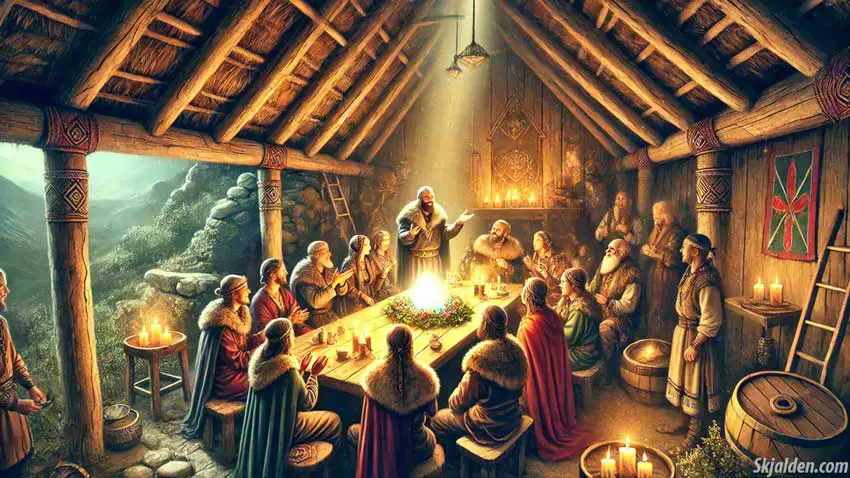In Norse mythology, hamingja represents both a guardian spirit and the essence of luck, forming a crucial part of the soul. This concept greatly influenced the daily lives of ancient Norse people. The term hamingja comes from hamr (shape or skin) and ganga (to walk), indicating beliefs in mystical shape-shifting, a common theme in Norse stories.
Norse societies viewed hamingja as a source of luck that brought prosperity and security to families. Famous leaders like Harald Fairhair and Olav Tryggvason, known for their strong hamingja, were seen as powerful and wealthy.
Being close to such influential figures often meant greater security and prosperity for others as well. The fortunes of these leaders not only enhanced their wealth but also supported their effective governance and power maintenance.
Hamingja in Rituals and Heirlooms
Hamingja played a pivotal role in rituals and was linked to significant family objects. It was especially important during naming ceremonies and the birth of children. The placental membrane, for instance, was seen as a sign of a fortunate future.
Additionally, items like swords or rings, and attributes such as strength, were believed to carry hamingja, underscoring its widespread importance across Norse culture.
Hamingja deeply influenced how the Norse made decisions, lived, and interacted. This element was central to their lives, impacting everything from their social structures to their leadership strategies.
For the Norse, hamingja was tangible and practical, influencing daily life profoundly. Understanding hamingja helps us appreciate the values and priorities that guided Norse society. It shows how deeply their spiritual beliefs were interwoven into their daily life and community organization, highlighting its role as a core element of the soul in Norse spiritual and cultural traditions.
